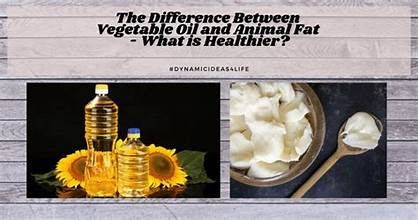Seed Oils vs. Saturated Fats: What's Really Heallthier?
Ellie McKenzie • April 15, 2025
Seed Oils vs. Saturated Fats: What’s Really Healthier?

by Ellie Bishop McKenzie
You’ve probably seen the headlines and social media debates: Are seed oils harmful? Should we switch back to butter, ghee, or beef tallow? Some restaurants are even making the switch to beef tallow in the name of “health.” But what’s the real story?
Let’s break it down with facts—not fads.
The Role of Fat in Your Body
Dietary fat is essential for optimal health. It supports healthy skin, hair, and nails, fuels brain function, and aids in hormone production. But fat is also energy-dense: each gram contains 9 calories. That means small amounts pack a major caloric punch.
What Does the Research Say?
A comprehensive study (PMID: 40048719) involving over 200,000 participants and 33 years of follow-up examined the impact of plant oil and butter intake on cardiovascular disease (CVD), cancer, and all-cause mortality. The findings were clear:
- People in the highest butter intake quartile had a 15% higher risk of death.
- Those in the highest plant oil intake quartile had a 16% lower risk of death.
- Even without olive oil, plant oils still reduced mortality risk by 8%.
- Each 10g increase in plant oil intake was linked to:
- 11% lower cancer mortality
- 6% lower CVD mortality
- Every 10g increase in butter raised cancer mortality by 12%.
- Canola and soybean oils were particularly beneficial:
- 5g of canola oil/day reduced cancer mortality by 19%
- 5g of soy oil/day by 6%
The evidence strongly supports incorporating plant-based oils—especially olive oil— into your diet for long-term health.
The Bigger Picture: It’s Not Just About Which Fat
Let’s zoom out. The conversation around fats often misses the broader issue: overconsumption and inactivity.
You’ve probably heard people say carbs make you fat. In truth, over 98% of stored body fat comes from dietary fat, not carbohydrates. So when someone recommends avoiding carbs while loading up on butter and oils, they’re steering you off course.
The real problem isn’t carbs or fat— it’s that processed foods are hyper-palatable and calorie-dense, making it easy to overeat.
Portion Control Matters
Consider this:
- An 8oz ribeye steak has 544 calories and leaves you full for hours.
- A Sprinkles cupcake has 470 calories but dissolves in seconds—and you’re hungry again 20 minutes later.
- Fat behaves similarly. A tablespoon of olive oil contains 119 calories—fine for a salad. But if you’re frying food in a cup of oil, that’s 1,900+ calories before you even add the food.
- Even when sautéing, use oil sparingly. A small drizzle is enough. Otherwise, you’re consuming unnecessary calories without realizing it.
Take Control of Your Health
The bottom line? Most people are eating too many calories and moving too little.
Take ownership of your health through education, balance, and intentionality:
Learn about your food:
- Aim for a balanced macro distribution: roughly ⅓ carbs, ⅓ fats, ⅓ protein.
- Align your caloric intake with your activity level:
- Gaining weight? Eat less and move more.
- Losing weight too quickly? Eat more or scale back activity.
So… Seed Oils or Animal Fats?
Don’t get lost in the noise. Keep your total fat intake moderate, focus on whole foods, and when choosing oils, olive oil remains the gold standard. And remember: if you’re sautéing or frying in large amounts of any oil—plant or animal—you’re missing the forest for the trees.
Empower yourself with knowledge. Move your body. Fuel it wisely. Your long-term health depends on the choices you make daily.


